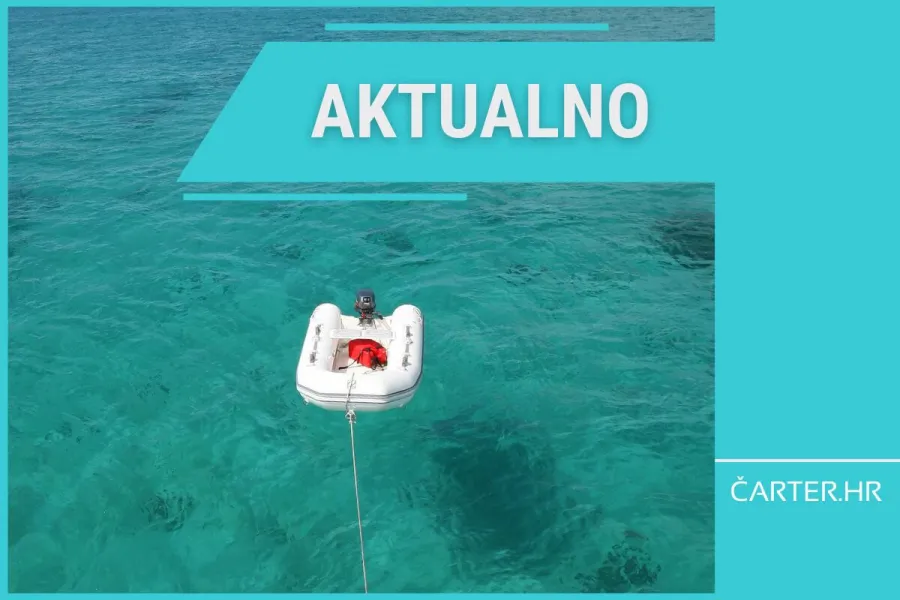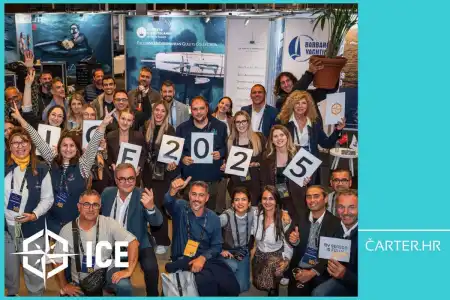
- 28.05.2025.
- News, Regulations
Following the publication of the article about the new Regulation on the Safety of Navigation, we received an official response to a question troubling many yacht charter companies: how exactly should a tender be marked and used in accordance with the rules? We requested an official clarification from the competent authorities – and we received it! Below we present the specific conditions that apply to all auxiliary vessels, including something most people overlook: mandatory insurance, movement restrictions, and marking requirements.
One of the most frequently asked questions we received after publishing the article about the new navigation safety regulation relates to the specific conditions under which tenders may be used in yacht charter operations.
Although the new Regulation on the Safety of Maritime Navigation (Official Gazette 52/2025) clearly defines the area of navigation for tenders, various interpretations have arisen in practice – especially concerning the marking, usage conditions, and insurance of auxiliary boats.
To obtain a precise interpretation, we reached out to the competent institutions: the Ministry of the Sea, Transport and Infrastructure and the local offices of the port authorities.
We received an official response from the Directorate for Navigation Safety, Port Authority of Zadar, which we present in full:
“Article 87 of the Regulation on the Register of Ships, the Maximum Permissible Age and Technical Conditions for Registration in the Ship Register (Official Gazette 131/23 and 142/03), stipulates that an auxiliary boat or dinghy, belonging to the parent vessel, must be marked with the words 'pripadak' or 't/t' and the name or designation of the vessel to which it belongs, in accordance with the provisions of this part of the Regulation. The term 'vessel' here is used for all maritime objects as well as for inland navigation objects, and the term 'auxiliary boat' also refers to the tender. The method of use of the auxiliary boat is regulated by the Regulation on the Safety of Maritime Navigation in the Internal Waters and Territorial Sea of the Republic of Croatia and on the Manner and Conditions for Carrying Out Maritime Traffic Supervision and Management (Official Gazette 52/25), which states that a vessel belonging to another maritime object and registered or marked as part of the equipment of the parent object, may navigate within an area of up to 500 meters from the maritime object to which it belongs, except when transporting persons and items from the maritime object to the nearest mooring location or between an anchorage and the port to which the anchorage belongs.
Accordingly, it is evident that an auxiliary boat may be used in the manner and under the conditions prescribed by the above regulations, meaning the auxiliary boat must meet the following conditions:
1. must be marked with ‘pripadak’ or ‘t/t’ and the name or designation of the vessel to which it belongs,
2. may not travel more than 500 meters away from the maritime object to which it belongs, except when transporting persons and items from the maritime object to the nearest mooring location or between the anchorage and the port to which the anchorage belongs,
3. auxiliary boats with an engine power of 15 kW or more must have valid liability insurance for damage caused to third parties, either as a separate insurance policy or such insurance for the auxiliary boat must be explicitly agreed upon and listed in the insurance policy of the parent vessel.”
What does this mean for yacht charter companies?
Clearer rules make it easier to prepare for inspections and provide precisely defined guidelines for the marking, movement, and insurance of tenders in everyday practice.
Note: After publishing the previous article, we received several more inquiries regarding uncertainties in applying the new Regulation. We have sent additional clarification requests to several other relevant addresses, but at the time of publishing this article, we had not yet received responses. As soon as we do – we will publish them.
Until then, sign up to our newsletter, with specific answers you can actually apply in practice.
Categories of trends
- News
- Sale
- Marketing
- SEO
- Web design
- Social media
- Technology
- Regulations
- Management
- Education
- Finances
- User experience
Newsletter
Sign up for the newsletter and receive the latest trends and tips straight to your inbox




